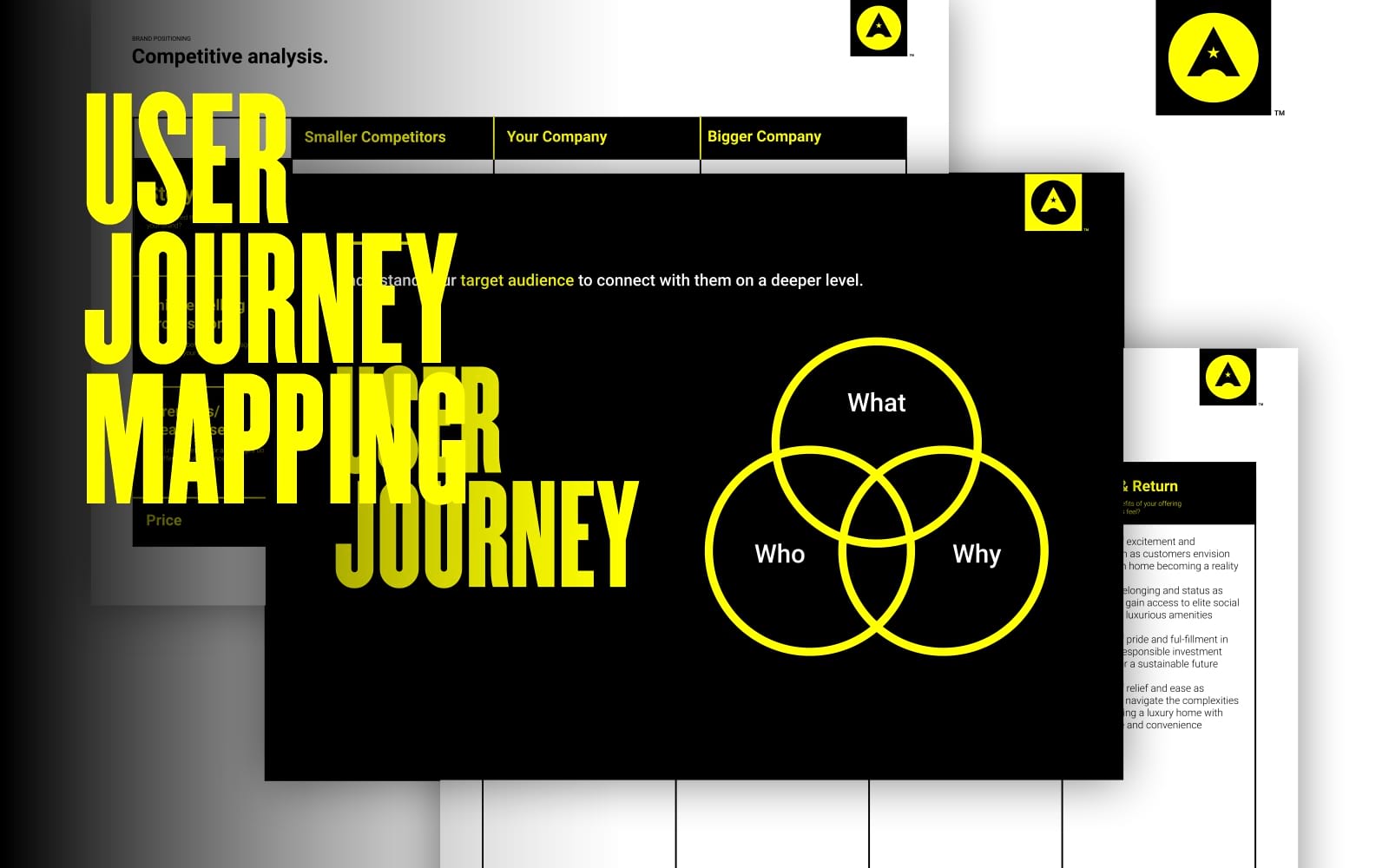Design
Unlock Brand Success with User Journey Mapping: A Comprehensive Guide
10.02.2025
By Shaikh Asif

Design
10.02.2025
By Shaikh Asif
Definition and Overview
What is User Journey Mapping?
User Journey Mapping is a visual representation of the process a user goes through to achieve a specific goal with a product or service. It outlines the user's experience from their initial contact with the brand to the final interaction, capturing their needs, emotions, and pain points.
Why It Matters
Effective user journey mapping helps businesses understand their users' experiences in a detailed and structured way, enabling them to optimize touchpoints and improve overall satisfaction.
Example:
Imagine you're launching a new e-commerce platform. By mapping out the user journey, you identify that users are frustrated with the checkout process. With this insight, you can streamline the checkout process, enhancing user satisfaction and potentially increasing conversions.
Understanding the User Experience
Enhancing Customer Satisfaction
By visualizing the user journey, businesses can pinpoint areas of friction and improve the overall customer experience. This leads to higher satisfaction and loyalty.
Driving Business Outcomes
A well-mapped user journey helps in designing more effective marketing strategies, product features, and service improvements that align with user needs.
According to a report by Forrester, companies that actively map and analyze user journeys see a 20% increase in customer satisfaction scores and a 10% increase in conversion rates.
Essential Elements
Touchpoints:
Points of interaction between the user and the brand, such as websites, social media, and customer service.
Emotions:
Users' emotional responses at different stages of their journey, which can help identify pain points and areas for improvement.
Pain Points:
Challenges or obstacles users face that hinder their experience.
Visual Example:
A user journey map for a food delivery app might include touchpoints like browsing the menu, placing an order, and receiving the delivery. Emotions might range from excitement while choosing dishes to frustration if the delivery is delayed.

Step-by-Step Guide
Research and Data Collection
Gather data through user interviews, surveys, and analytics to understand user behaviors and needs.
Define User Personas
Create detailed profiles of your target users, including demographics, goals, and challenges.
Map the Journey
Outline the stages users go through and the touchpoints they interact with. Use visuals like flowcharts or diagrams to represent these stages.
Identify Emotions and Pain Points
Capture users’ emotional responses and identify any pain points they encounter.
Analyze and Optimize
Review the map to identify opportunities for improvement and optimize the user experience.
Practical Tip:
Use tools like Miro or Lucidchart to create interactive and shareable journey maps.
Popular Tools
Miro: A collaborative online whiteboard that is great for creating and sharing journey maps.
Smaply: Provides templates and tools specifically for user journey mapping.
Lucidchart: A versatile diagramming tool that can be used for detailed journey mapping.
Techniques
Customer Journey Mapping Workshops: Engage with your team or stakeholders to collaboratively build and refine the map.
Heatmaps and Click Tracking: Use these tools to visualize user behavior on your website or app.
Example:
A design studio might use Miro during a workshop to collectively build a journey map for a new client project, ensuring all team members contribute their insights.
Case Study 1: Airbnb
Challenge: Improving the booking process.
Solution: Airbnb used user journey mapping to identify pain points in the booking process and made adjustments, leading to a smoother experience and increased bookings.
Case Study 2: Starbucks
Challenge: Enhancing mobile app usability.
Solution: Starbucks mapped the user journey for their app and discovered key friction points, resulting in a redesigned app that improved user satisfaction and engagement.
Common Mistakes
Overcomplicating the Map: Including too much detail can make the map overwhelming. Focus on key touchpoints and insights.
Ignoring User Feedback: Always incorporate direct user feedback to ensure the map reflects real experiences.
Tips to Avoid Pitfalls
Keep It Simple: Focus on clarity and relevance.
Validate with Users: Regularly test and validate your journey map with real users to ensure accuracy.

Impact on Branding
Aligning Brand Touchpoints: Ensures that all brand interactions are cohesive and align with the overall brand strategy.
Improving Messaging: Helps tailor messaging to address user pain points and emotional triggers effectively.
Impact on Design
User-Centered Design: Enables designers to create solutions that directly address user needs and enhance the user experience.
Example:
For a new tech startup, user journey mapping might reveal that users are confused by the onboarding process. By redesigning the onboarding experience, the startup can create a more intuitive and engaging first impression.
At Alitestar, we believe in creating brand experiences that connect deeply with users. Our branding services, from logo design to brand identity and brand storytelling, are designed to reflect a brand’s unique values while enhancing every touchpoint in the user journey.
When you partner with us, you’re not just getting a design agency—you’re getting a strategic partner invested in crafting a brand experience that resonates with your audience at every stage.
User journey mapping is more than a tool—it's a strategy for building stronger, more user-focused brands. By diving into the details of your users’ experiences, you can design brand experiences that are not only beautiful but also meaningful and effective.
Call to Action:
Ready to elevate your brand through strategic journey mapping and premium design services? Contact Alitestar today to learn how we can help you create a brand that truly connects with your users.


Shaikh Asif is an Award-winning designer, director, strategist, and educator. He’s the Lead Strategic Brand Designer and Art Director of The Alitestar— a strategic branding and design agency that helps startups, ambitious CEOs, and passionate entrepreneurs to achieve success and ultimately create unforgettable brand experiences.